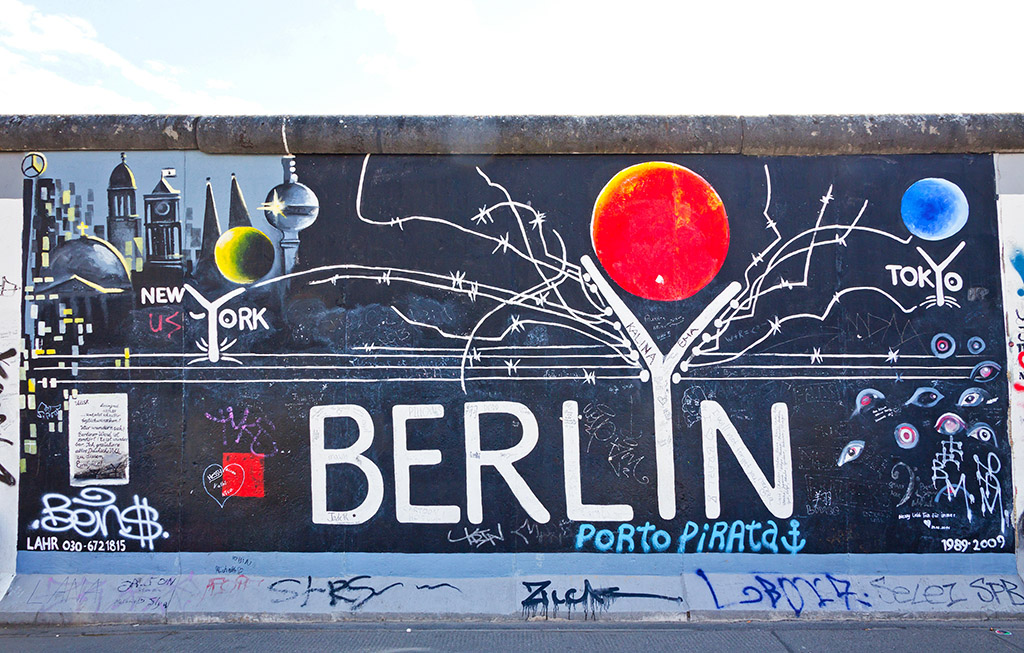Berlin is one of those cities that feels like it’s constantly transforming—its energy is electric, chaotic, and always pushing boundaries. It’s a city that breathes art, from its historical museums to its gritty, urban streets. But if you’re like me, you’re here for the unsanctioned stuff—the murals that pop up on crumbling walls, the graffiti that challenges authority, the installations that make you stop in your tracks and think, what does this even mean?
Welcome to Berlin’s street art scene—where the line between vandalism and creativity is paper-thin, and the city itself becomes a canvas for artists who refuse to play by the rules.
Street Art as Berlin’s Pulse
If you’ve wandered around Berlin for any amount of time, you’ve seen the murals. Towering over you as you walk down alleys, hidden in plain sight, covering entire facades of apartment buildings—street art here is as much a part of the urban landscape as the bricks and mortar that hold the city together.
The neighborhoods of Kreuzberg and Friedrichshain are ground zero for some of the most iconic works of contemporary street art. These areas, once divided by the Berlin Wall, now form a cultural melting pot where the old meets the new. The street art here is bold, unapologetic, and often political—reflecting the same rebellious spirit that defines the city itself.
Take the work of street artist Blu, whose 2007 mural on Curvystraße became an international symbol of the fight against capitalism and corporate greed. The mural depicted two figures unmasking each other, chained by watches and money, and although it was later painted over in protest of gentrification, the impact of the work lives on in the conversation it sparked. Blu didn’t just leave his mark on the building—he left it on the cultural consciousness of the city.
The Evolution of Street Art in Berlin
Street art in Berlin didn’t just happen—it evolved. After the fall of the Berlin Wall in 1989, the city became a blank canvas, especially in the eastern parts where buildings had fallen into disrepair. Artists from around the world flocked to Berlin, eager to claim a piece of its raw, post-war energy.
What started as underground graffiti culture has blossomed into a full-fledged artistic movement, recognized internationally. Artists like El Bocho, whose paste-up pieces of the character Little Lucy now grace walls all over the city, have taken something illegal and turned it into a respected art form. Even Berlin’s more conservative elements have been forced to acknowledge that street art has become a legitimate part of the city’s identity.
Berlin doesn’t just tolerate street art—it celebrates it. The city regularly hosts festivals and exhibitions, like the Berlin Mural Fest, where new large-scale works are commissioned to grace the sides of buildings, often involving collaboration with local and international artists.
From Rebellion to Mainstream
Yet, here’s the paradox: street art, by its very nature, is meant to exist outside the gallery walls. It’s rebellion. It’s freedom from constraint. And now, it’s being embraced by those very institutions it once rejected. Walking through Berlin, you’ll see this tension in action—the graffiti that calls out to the masses and the polished murals that might as well hang in a gallery.
Berlin has become a global destination for contemporary street art. The East Side Gallery is a prime example. Stretching over 1.3 kilometers, this open-air gallery on the remnants of the Berlin Wall features works from over 100 artists and is a testament to the power of public art to heal and inspire.
But don’t let the formal recognition fool you—Berlin’s street art is still raw. It still carries with it the grit of rebellion. And while some of it has been commercialized, much of it still challenges the status quo.
The Future of Street Art in Berlin
What does the future hold for street art in a city that’s constantly evolving? Well, that’s the thing about Berlin—it doesn’t sit still for long. Every time the city seems to settle into a new identity, something shifts. And that’s why street art is such a fitting symbol for Berlin—it’s never finished. It’s always changing, always evolving, always responding to the forces at play.
The rise of gentrification and corporate interests has undoubtedly impacted the city’s art scene. Murals get painted over, buildings get torn down to make way for luxury developments. Yet, as we’ve seen time and again, Berlin’s artists won’t go quietly. They’ll continue to leave their mark on the city in ways that are unexpected and, often, uninvited.
In the end, street art is more than just an expression of individual creativity—it’s a reflection of the city itself. And as long as Berlin continues to change, you can bet that its walls will keep talking.
Final Thoughts
For those of us who travel to explore art, Berlin offers something that traditional galleries and museums can’t: a living, breathing art scene that’s part of the city’s very fabric. From the politically charged murals of Kreuzberg to the ever-changing pieces along the East Side Gallery, Berlin’s street art scene is a testament to the power of creativity to shape, and be shaped by, its environment.
If you find yourself in Berlin, don’t just stick to the main tourist attractions. Wander the streets, follow the murals, and listen to what the walls have to say. You might be surprised at the stories they tell.
